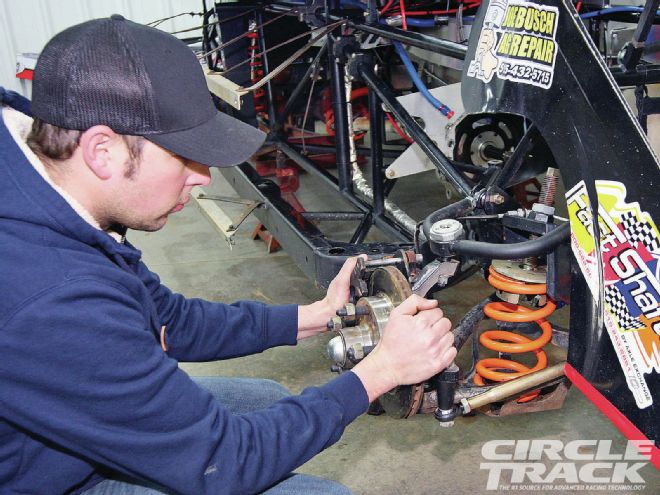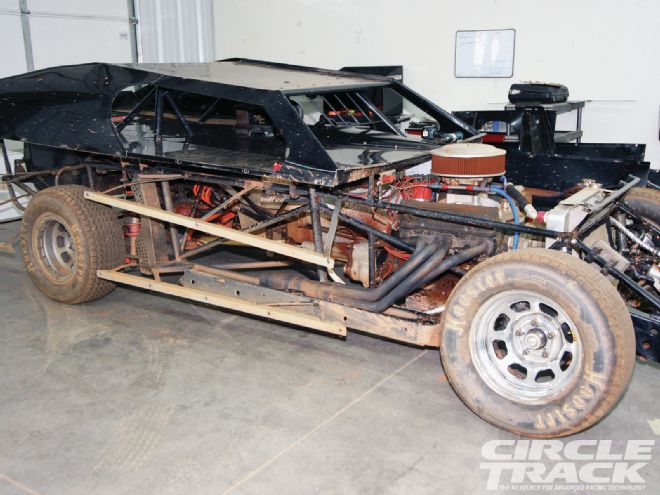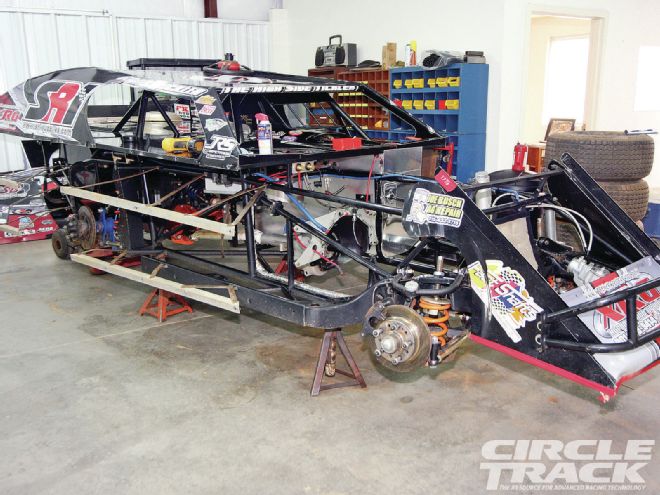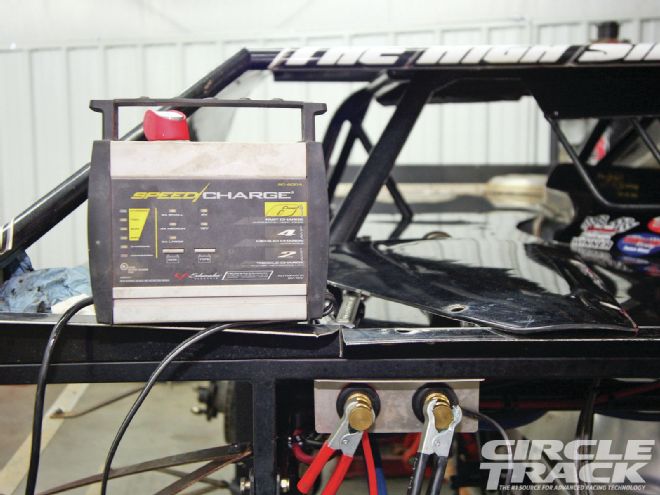
At Circle Track, one factor we always try to keep in mind with almost all of our articles is how to keep racing when life gets in the way. We’d all love to have the kind of bank account that would allow us to hire all the crew we need and a fleet of cars so that every component is completely torn down and rebuilt between races.
But unless your last name is Hendrick or Penske, that’s probably not your reality. Most of us have enough trouble just making the house payment or tuition for the kids and have to race with whatever money is left over after all the other bills are paid. That makes the crew an all-volunteer force who are only available to work in the evenings after getting off from their own jobs.
 A little preparation ahead of time can go a long way when time is precious. For example, Strickler recommends using Dzus-style fasteners wherever possible when hanging body panels instead of rivets or bolts. This makes it much quicker and easier to pull the body off the car so that you can clean the car thoroughly after a hard night of racing. It can also make repairs at the track easier as well.
A little preparation ahead of time can go a long way when time is precious. For example, Strickler recommends using Dzus-style fasteners wherever possible when hanging body panels instead of rivets or bolts. This makes it much quicker and easier to pull the body off the car so that you can clean the car thoroughly after a hard night of racing. It can also make repairs at the track easier as well.
The result is too little money and too little time to get everything done. It’s a universal truth that almost all Saturday night racers labor under. The key is to make the most of the time and resources you do have.
That’s one of the reasons we enjoy working with Kyle Strickler Motorsports—the operation manages to achieve more on a dollar than practically any race team we’ve ever seen. Strickler is one of the very few people able to race IMCA-style Dirt Modifieds as a full-time gig. In previous tech articles working with Strickler we’ve already mentioned that he capped off the 2012 season with 34 wins in 61 events and an incredible average finish of 3.1. That type of success doesn’t come without a complete handle not only on how to set up and drive a race car, but also how to manage the schedule and all the problems that pop up during the week at the race shop.
 1. Working on a dirty race car isn’t anyone’s idea of fun. Plus, dirt can camouflage problems, making them easier to miss. This is a different car, but you get a good idea of the before and after. Now Strickler and his crew are ready to get down to business preparing the race car for the team’s next event. First on the to-do list is to completely nut-and-bolt the car from front to back so that a dropped bolt won’t make your next race an unexpectedly short one.
1. Working on a dirty race car isn’t anyone’s idea of fun. Plus, dirt can camouflage problems, making them easier to miss. This is a different car, but you get a good idea of the before and after. Now Strickler and his crew are ready to get down to business preparing the race car for the team’s next event. First on the to-do list is to completely nut-and-bolt the car from front to back so that a dropped bolt won’t make your next race an unexpectedly short one.
Now, Strickler has expanded his operation to a three-car race team. Strickler will continue to race one car while offering the other two seats to qualified racers. For a thousand dollars per event, Strickler plans to field a Dirt Modified race car equal to his own and even coaching. As this went to press, he’d already booked a full schedule for the first part of the season but dates were still available for the second half of the year.
While discussing his new multi-car operation, we asked how Strickler and his two-man crew could possibly handle the extra workload that goes with fielding two extra cars. And while he admitted there definitely would be long hours and late nights involved in keeping three race cars capable of claiming Victory Lane, part of his answer included outlining his weekly regimen of checks to catch small problems before they become big ones on the racetrack. What impressed us is that almost all of the checks were quick, targeted toward specific areas where issues most often crop up, and do not require lots of expensive equipment. With Strickler’s permission, we’re sharing several of the highlights from his list. Strickler says these checks have proven themselves helpful over time and each has been responsible for helping him avoid an untimely DNF and find Victory Lane. So as you try to prepare your race car for the start of a new season, or the next race, or the race after that, here are a few tips to help make your life a little easier.
 20. Finally, recheck the car and tie up any loose ends. For example, make sure to put a fresh charge on the battery before every race. And don’t forget to check your belts for frays or any signs of damage.
20. Finally, recheck the car and tie up any loose ends. For example, make sure to put a fresh charge on the battery before every race. And don’t forget to check your belts for frays or any signs of damage.